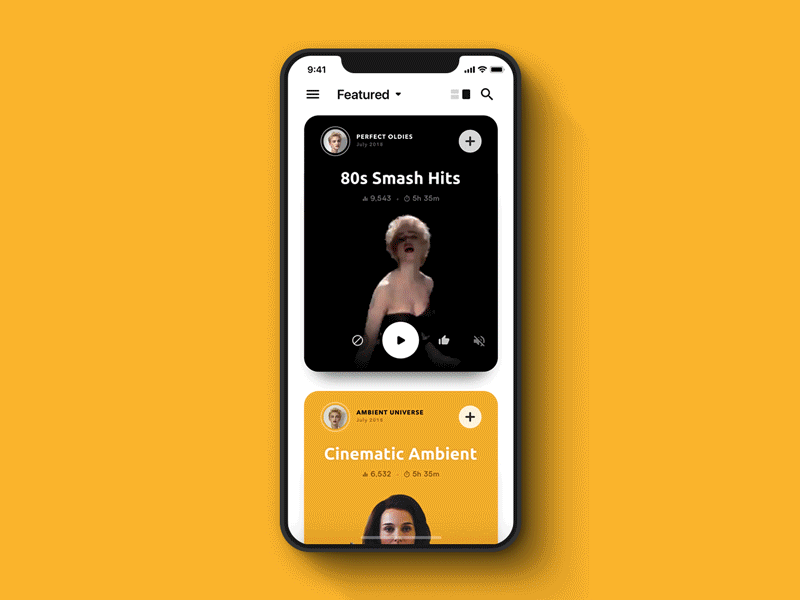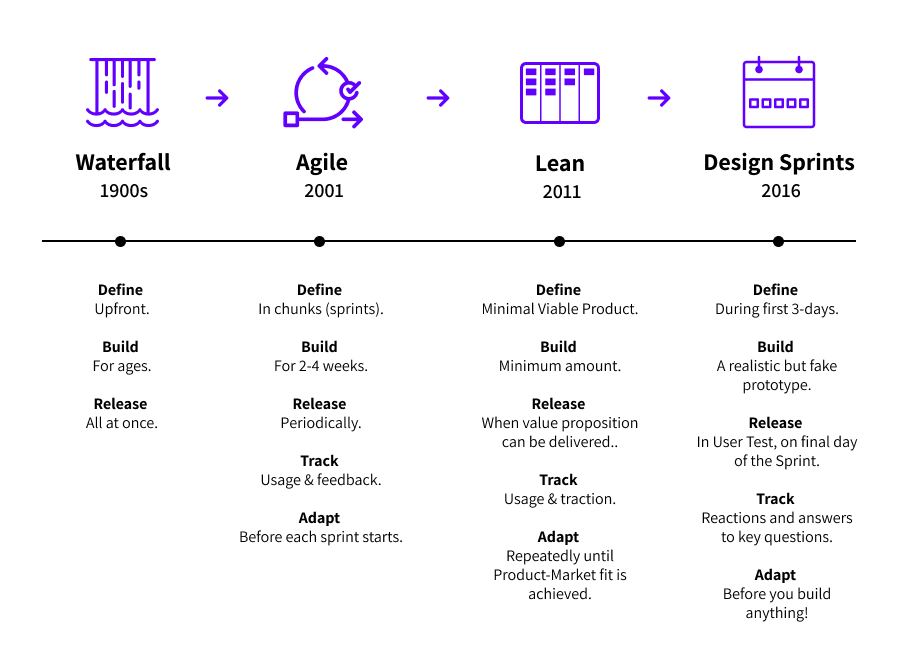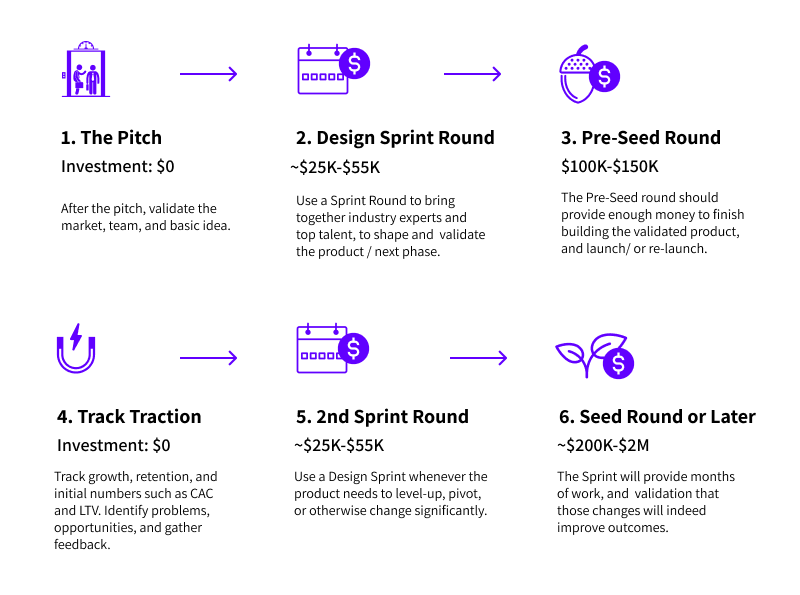I am a Product Designer, and through my agency Remake Labs – a kind of Head of Product for hire. What that means, broadly speaking, is that I am in charge of identifying and distilling customer needs, researching the capabilities of competitors, creating product-market fit, prototyping and testing solutions to see what works, adapting to user feedback, optimizing conversions, and designing the company’s product roadmap.
As a Product Designer, I am almost always the person most obsessed with questions of Conversion, Retention, Growth, CAC (Cost of Acquiring a Customer), and LTV (Life-Time Value). I’m the person in charge of figuring out the truth behind why things are not working, and the person in charge of coming up with solutions that will help the product take off.
In short, whether you realize it or not, the Product Designer is the person whose quality of work and methodology is most crucial for the success or failure of the product in the early stages.
Yet I am constantly running into so-called pragmatic, show-me-the-money types of investors who still view design as a squishy, artsy endeavor that is perhaps mysterious and subjective in nature.
Nowhere is this more visible than the near total ignorance that most investors have about GV’s 5-Day Design Sprint process, and why it is taking off like wildfire around the world.

Now, I’ve been involved with the early-stage investing industry since 2007, when I joined David S. Rose’s company Gust (then called AngelSoft) in NYC: the first crowdfunding platform for Angels, VCs, and entrepreneurs. I’ve met with and designed features for some of the US’s leading early-stage investors and VCs, and was since employed by or collaborated with several venture funds and accelerator programs, helping their portfolio companies design and launch products, and in some cases get acquired.
I’d say I’m fairly well-versed in the mindsets, priorities, and operations of early-stage investors.
Which is why I’m baffled by the fact that by and large, early-stage investors, angels, and VCs continue to pour their money quite literally down the drain of unvalidated, unnecessary development efforts, instead of employing Design Sprints. This is especially hard to understand with a methodology that originated at Google Ventures, Google’s investment arm, and which has de-risking and cheap validation as its primary objective.
In fact, it’s a process that is equal parts Design and Due Diligence.
Large companies like Google, Twitter, Airbnb, Facebook, Microsoft, Lego, and even McKinsey, have already jumped on the Design Sprint methodology bandwagon. Smart product designers and entrepreneurs all over the world are likewise beginning to realize that sprints can allow them to be leaner than lean and save ungodly amounts of money on development.
There’s no magic to the Sprint. It is essentially a well-crafted series of best practices from the world of design and product validation, compressed into a single week, and timed with a timer.
And yet the idea is kind of revolutionary — in the audacity of timing a group of humans for an entire week, in the way it allows ideas from a large group of experts to affect the product, and in the consistently remarkable business outcomes and learnings it can produce.
( I’ve written more about this from the entrepreneur’s perspective, in my last longform article – 9 Reasons Why We Start Projects with Design Sprints. )
Yet, as far as I can tell, most early-stage investors haven’t heard of GV’s bestselling Design Sprint book, let alone read it.
( That’s right – Jake Knapp, and the other Design Partners at GV have published a bestselling book about their product de-risking approach in 2016, where they detailed how they ran the sprint with portfolio companies as diverse as Slack, OneMedical, Blue Bottle Coffee, and Savioke Robotics. They explain how they did it, and why it worked. They even recommend the type of snacks to serve during a Sprint. )
So, let’s start a revolution.
Below you’ll find my formulation for what I think GV knows about Design as an investment tool:
1. The No-Code Revolution Changes Everything

With prototyping tools like InVision, Marvel, and No-Code builders like Elementor, Squarespace, Webflow, and any number of others — it is cheaper and faster than ever to put together a prototype that is virtually indistinguishable in experience from the real thing. It has therefore been possible for a few years now to validate a product with users before writing a single line of code. I remember well how hard it was back in 2008. It is ridiculously easy today.
The Design Sprint makes use of these capabilities, to put together realistic, well thought-out prototypes which build on the feedback and ideas of multiple experts and team members. It then includes a full day of in-depth user tests. These are tests with real target users, which are guaranteed to yield dozens of fresh and critical insights.
Wondering how to test a new pricing scheme? Onboard and educate users efficiently? Validate a radical redesign idea or a pivot that is supposed to yield great results? A 5-day design sprint was made for this, and routinely produces fast and invaluable learnings for a fraction of the cost of traditional processes.
2. Technical Development is Still the Largest Expense
The tendency to start coding quickly, under the banner of lean and agile – used to be a wise choice. The best learning comes from doing, and coding was the only way to proceed, until recently.

But with companies employing an average of 1 designer for every 27 developers (according to this recent paper by InVision), and many of best companies just now moving in a direction of 1:8 ratio or even lower, it is a simple fact that expenses explode when a project moves from the design phase to development, with one week of design often occupying a development team for months.
From a purely financial perspective, then, it makes sense to do more validation at the lower burn rate, before kicking the higher rates into gear. Designers can now create mockups that are nearly indistinguishable from the real thing, and they should.
Lean design never meant rushing to development – quite the contrary. It meant building the least amount possible to produce learning. This is why Eric Ries, the author of The Lean Startup, endorsed the sprint process in strong terms:
“Sprint offers a transformative formula for testing ideas which works whether you’re at a startup or a large organization. Within five days, you’ll move from idea to prototype to decision, saving you and your team countless hours and countless dollars. A must-read for entrepreneurs of all stripes.”
— Eric Ries, author of The Lean Startup
Testing core assumptions within days, not weeks or months is leaner than Lean, and more agile than Agile. It also just makes good sense. This is why they are taking the tech world by storm.
3. Product Designers are Taught How to Zero-In on Real Human Needs, CEOs and Developers Aren’t
Product Designers have invaluable tools at their disposal: tools like Design Thinking, human-centered design, design research approaches, design critique and review skills, and prototyping habits that can do wonders for companies’ ability to find product-market fit quickly, repeatedly, and cheaply.
The Design Sprint brings together these skills and allows a group of experts with diverse talents to engage together in many of these best practices, and emerge with much of their product in hand. The sprint includes exercises for:
- Interviews with experts
- Aligning around a vision
- Key validation questions
- Competitive research
- Ideation and exploring alternative solutions
- Validation with actual users
And all in a sufficiently tight form that allows non-designers to participate, contribute, and benefit from the process.
4. Focus is Life
Did you notice how quickly the term MVP (from Lean Startup) started getting abused and misinterpreted? Some entrepreneurs ignore the Minimal and insist that the MVP must include every last desire. Others focus on the minimal at the expense of figuring out the true requirements of viable use.
The art of focus is hard. It is entirely possible for teams to focus on and prioritize the wrong things or, more commonly, to try to do too much.
The Design Sprint can force even a large and diverse team to focus by limiting them to 5 key needs, 3 key validation questions, and 1 clear long term goal. Yet it does so by first airing out all the different positions from team members and experts, to make sure we select the very best ideas we have. Then – the sprint actually validates our decisions, by testing the outcome with users.
5. Strategy and Design Are Becoming Inseparable
There is a growing understanding in business that Strategy isn’t about nice-sounding goals, go to market tactics, or branding. Strategy is about identifying the underlying market challenges, and devising a coherent, internally consistent product and business plan designed to overcome them. In other words – strategy is increasingly recognized to be indistinguishable from design.
Design as a methodology and a mindset for creating new and valuable things for humans – has been the core engine of innovation, growth, and strategy and is responsible for many spectacular business successes. Overall – it is a better predictor of a business’s success than pure technical capability.
In a recent impressive study, McKinsey showed that companies with strong emphasis on design culture and methodology outperformed industry-benchmark growth by as much as two to one.
In a separate study shared by Amr Khalifeh earlier this year, Design Sprints were shown to produce 7x savings on time, and at least 2x savings on budget. This does not include the mind-numbing costs of wasted development efforts due to lack of validation, lack industry expert consultation, and lack of focus – all of which are preempted by GV’s Design Sprint process.
6. The Age of the Sole Genius is Over
Sure, there are still a few startups out there with a genius founder that solved a clearly acute technical problem in a way that no-one else could: Some AI startups are like that, and Zoom seems to be another good example. (The reliability of its core technology is the primary reason for Zoom’s success in a crowded market.)
Most opportunities these days, however, take the form of complex, interdisciplinary design challenges that, once designed, do not require any technical breakthroughs to implement. Slack, Medium, Intercom, Lemonade, and Superhuman are all examples of this second kind of company – the Design Driven company. And if it’s true that Software is Eating the World and transforming all industries, then it’s also true that Design, and especially the practice of interdisciplinary co-creation must eat the world too.
Finding a way to benefit from and build on diverse points of view and forms of expertise is at the core of the creative challenge. Innovative teams routinely come up with ideas that are better than the ideas of any of the individual members, whereas dysfunctional teams often produce worse and more compromised ideas than the ideas of each individual team member. It’s in the right synthesis of ideas and perspectives that magic lies.
Design Sprints have a great solution to this, using a series of individual and group with structured votes and discussions. It allows teams to confidently invite as many experts to the table as are needed, and to let those experts express themselves fully, without offending egos or upsetting the hierarchy. And most importantly – with an integrated result at the end. It allows the product to benefit from everyone’s knowledge and creativity while avoiding any backlash.
From our experience decisions made in this way are considerably better, and often serve to change the Decider’s mind about key issues – significantly lowering the risk of an unconsidered decision.
7. Entrepreneur Attachment is Part of the Problem
The Buddha said that attachment is the root of all suffering. He might have had a point: Anyone who’s worked with entrepreneurs knows that undue attachment to a vision or an idea in the face of new market information can mean the death of a startup. This is one reason why the idea of venture creation is so appealing, with “company builders” like Obvious, HVF Labs, Betaworks, and Team8 responsible for some of the biggest brands and most promising startups.
The idea is simple: the fund identifies opportunities and ideal enterprise partners for these opportunities. It then brings together a diverse group of experts to Research, Design, and Validate the idea. Only after validating does the fund start recruiting talent, which may initially be led by an EIR (Entrepreneur in Residence) until a suitable CEO is hired.

Design Sprints are a perfect match for Venture Creation, and any Value Added fund. Funds often have vast networks of experts they can rely on. They also have an acute awareness of risks and assumptions that may need to be validated, and have internal analysts who often have more time for in-depth market research than the entrepreneurs themselves. These resources, when packaged correctly, can help achieve deep validation upfront. In the Venture Creation world, it could enable a veritable assembly line of validated, rational businesses and products. Where true market needs and opportunities guide, and not entrepreneurs passions and egos.
This shift could be a better deal for the entrepreneur as well, who could spend their time building and leading teams, not struggling with financial and market anxieties. Venture builders – who retain a higher stake than normal funds, can reduce the financial risks for these entrepreneurs with salaries and a financial cushion, while letting them enjoy the life of an entrepreneur minus the sleeplessness.
8. You Don’t Know Someone Until You’ve Been in the Trenches with Them
Another truism of early-stage investment is that you don’t really know an entrepreneur until you’re with them in a tough spot, or observe them navigate difficult situations. The pitch meeting or VC-lunch is a terrible way to get to know most entrepreneurs because that’s when they are performing for your benefit.
A Design Sprint is different. In working on real product problems, the GV team has gotten to know many entrepreneurs and their teams in an unmediated, intense, and real environment. Thus they got to observe up-close their reactions, team dynamics, the quality of expertise, and any tensions or competing visions between co-founders.
Entrepreneurs may mislead investors who are with them for brief sessions only. But they can’t fool product designers because we’re there when the magic happens or (more likely) doesn’t happen.
It’s not a surprise then that GV is famous for its value-added, collaborative spirit and for working with startups to get to the next level. It improves success, but it’s also the best way to truly understand what’s going on. It is the essence of Due Diligence.
—
For all these reasons and more, I believe the fear of change will not hold investors back for long from exploiting this de-risking tool. Indeed, I predict that in 24-36 months we’ll start seeing many more early-stage investors deploying it in smart ways. Investments rounds that are conditioned on a Design Sprint, or even a Design Sprint Mini-Round are in our future — and not just for the first version of the product, but at every major pivot, expansion, or significant redesign.

Design Sprints are the ultimate win-win: They reduce costs for entrepreneurs, reduce risk for investors, reduce headaches and scope-creep for developers, and allow designers to do what they do best without having to beg. And of course – it is much better for users to have products that they actually want, need, and like.
—
Remake Labs is a global Design Sprint Agency dedicated to better business and social outcomes through rapid design interventions.


